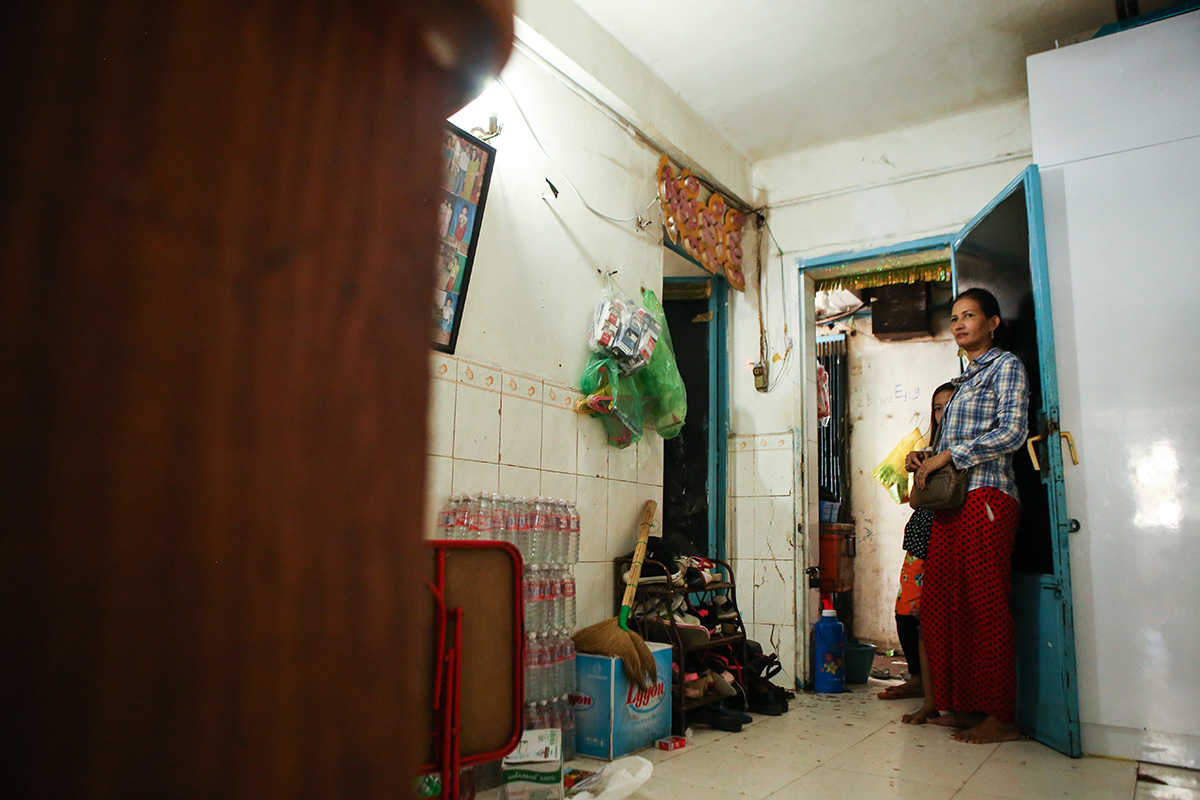
Next year’s razing of Phnom Penh’s iconic White Building will mark the third time the government has partnered with private developers to push 26-year-old Chum Phanith out of his home.
After a 2001 fire destroyed his neighborhood in the city’s Tonle Bassac commune—a blaze dogged by accusations of arson that left more than 16,000 people homeless—the government condemned the land, which would eventually become home to Aeon Mall.
He then moved with his older sister to Dey Krahorm, a low-income squatter community a few blocks from Independence Monument. Eight years later, after the city sold the 3.6 hectares upon which Dey Krahorm was built to a private construction company, a violent eviction—during which military police and construction workers, armed with tear gas and crowbars, tore through the neighborhood—left the siblings homeless once again.
Mr. Phanith’s sister used the $7,000 she received in compensation to move to the outskirts of the city, but he decided to stay in central Phnom Penh. He moved to the White Building, a series of apartment structures that extend along several blocks. But now this home, too, is destined for development.
Phnom Penh Governor Pa Socheatvong declared the White Building unsafe in 2014, and in October this year the government announced plans to partner with Japanese luxury developer Arakawa to demolish the structures and replace them with an $80 million, 21-story complex.
The plans leave Mr. Phanith—along with the nearly 2,500 other people who live in the tenement—once again facing eviction. It’s a feeling he said no one should experience once, much less three times.
“If the White Building is gone, people need to make new lives and new businesses,” he said. “I think the government should ask people what they want.”
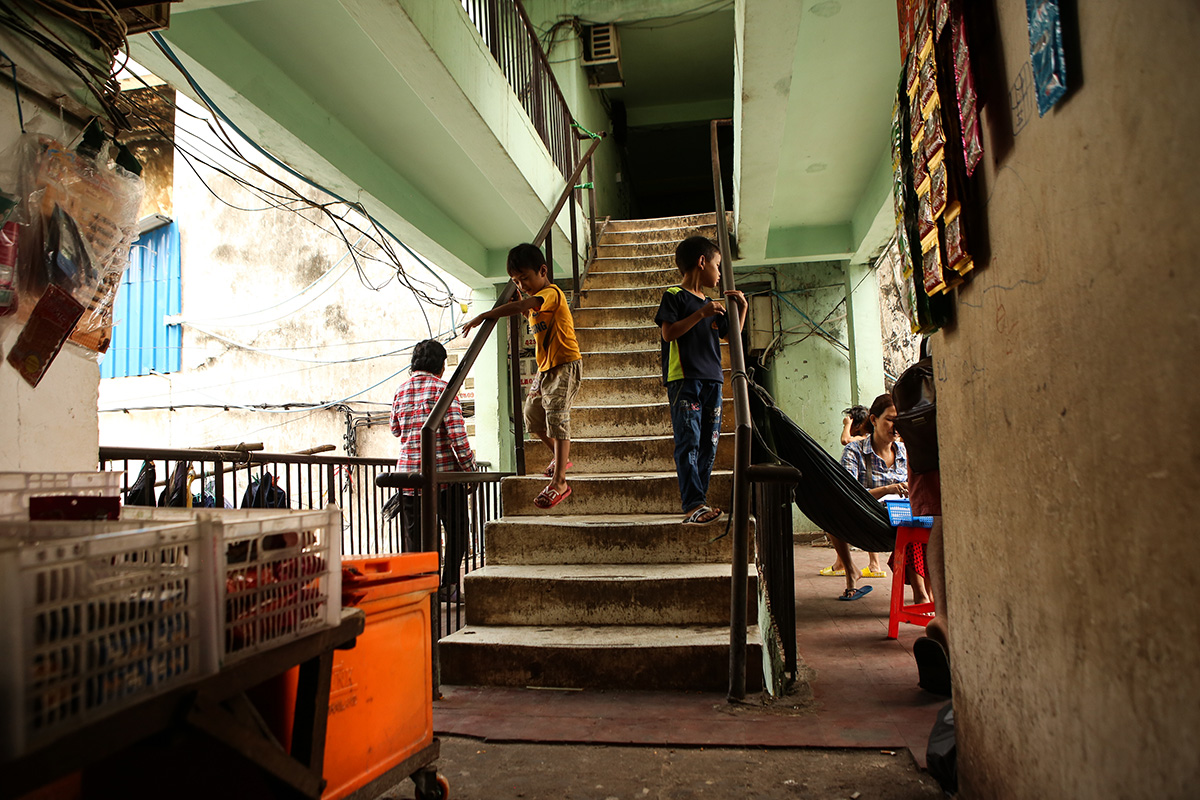
The eviction of the White Building’s residents is part of a larger trend, going back more than 15 years, in which Phnom Penh’s urban poor are being shifted from the center of the city to its outer edges. A 2010 report from Washington University Global Studies Law Review describes forced evictions as “among the most widespread human rights violations in Cambodia.”
More than 150,000 people have been evicted or displaced in Phnom Penh over the past 20 years, most often due to forced eviction, according to a 2014 report from land rights NGO Sahmakum Teang Tnaut (STT). Nearly all of the displacements are in the eight districts that make up the inner city, while the relocation sites are scattered 6 km or further from the city center.
The reason for many of these evictions—private development projects—oftentimes never materializes. In a report published this month, STT visited 77 sites that were cleared for development between 1990 and 2014 and found that 65 percent of them were left partially or entirely undeveloped. “Justifying evictions in the name of modernization and urban growth is a rather weak and inadequate premise, when progress has been moderate, gradual and slow,” it says.
The White Building was originally constructed in the New Khmer Architecture style at the behest of King Sihanouk in 1963 to help low- and middle-income residents stay in the city. Today, the building is also known for prostitution, drug use and a grimy exterior that belies its name.
Yet the residents of the White Building have made it into a lively and thriving community. The building’s outdoor communal spaces buzz with activity as those who live there—teachers and artists, vendors and business owners, doctors and students—go about their daily lives.
On the ground floor, there are hairdressers, restaurants, laundromats and coffee shops.
There is a fan mechanic, an artist who hand-carves wooden chess pieces at a coffee shop full of people playing cards, and a private school that provides free English and computer classes.
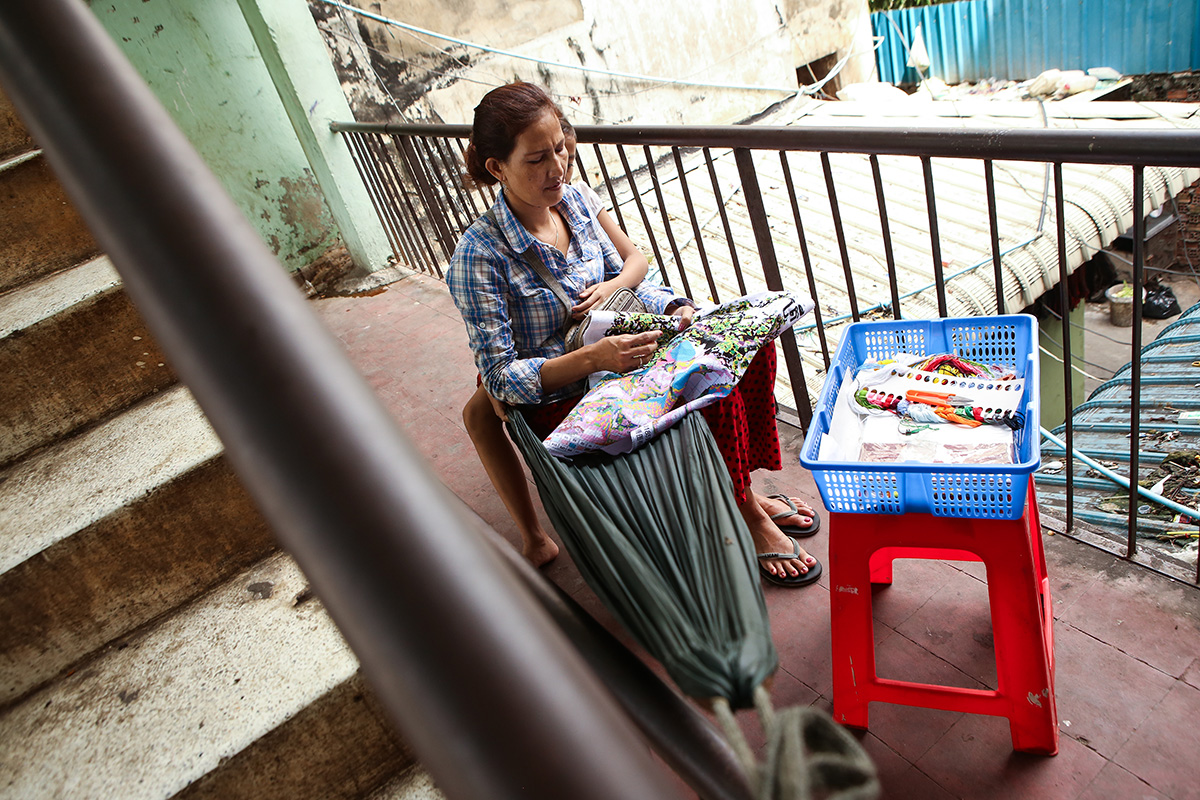
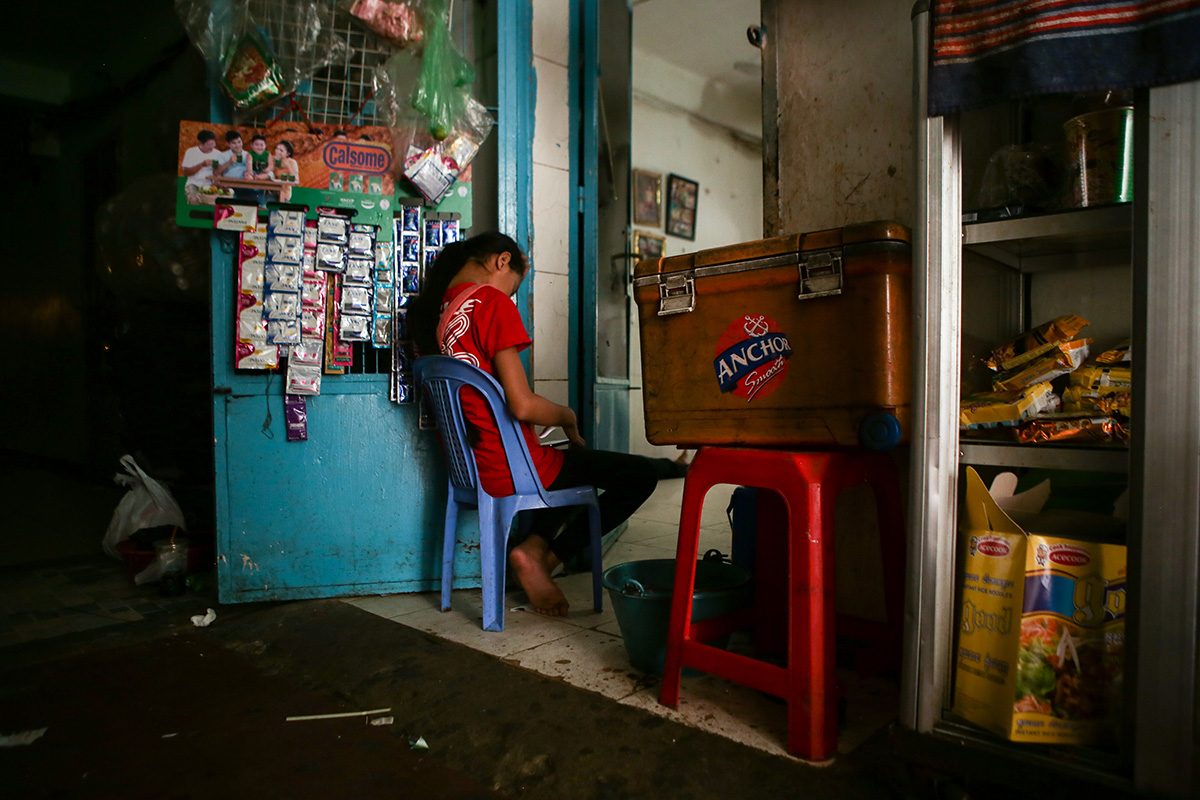

In the outdoor stairwells, groups of small children laugh as they dart between women hanging their laundry on the landings’ metal railings. Older women lie in hammocks strung in hallways, drying fish on woven baskets in the sun while they nap. Neighbors shout down the hallways as they cook and clean, and the smell of grilled meat mixes with the occasional waft of trash and urine.
The communal aspect of the White Building makes it something of an oddity in modern Phnom Penh, so much so that it has its own archive to record the history and culture of the building and its residents. The archive’s office—where Mr. Phanith works as the sole archivist—is housed in a small room lined with books, photographs and documents recording the White Building’s history.
The archive is part of SaSa Art Projects, an organization that has converted another rental apartment in the White Building into an art studio—a room it says is the only not-for-profit, artist-run space in Phnom Penh, and one that will no longer exist after the eviction.
December 3 was an important day for the White Building, and a busy one for Mr. Phanith. The Land Management Ministry sent nearly 600 staff to the White Building, cramming the hallways with officials in matching, all-gray uniforms, a stark contrast to the brightly painted murals that dot the building’s walls.
Their purpose was to survey residents’ apartments and clarify ownership—a process that was, at times, slapdash and haphazard, leaving many residents confused and uncertain over the building’s future, and their own.
The ministry copied residents’ identification cards, family books and, sometimes, took measurements of their units. It originally told residents they would hand out documents after their surveys, but later said officials would return two days later with documents for owners. As of Thursday, no residents interviewed had received documents or heard anything more from the ministry.
The government’s effort was part of an espoused attempt to provide residents fair compensation for their homes, a sharp break from the often-brutal evictions of the past, and a move many residents attributed to the involvement of the Japanese developer. Arakawa, in conjunction with the government, has offered residents temporary housing near the Royal Hospital of Phnom Penh, about 6 km outside the city center. There, they could wait for three or four years for the new development to be built, with the promise of a new, slightly larger unit once construction is complete.
The vast majority of residents—up to 90 percent by some estimates—expressed a preference for a cash payment, which was suggested by Land Management Minister Chea Sophara, apparently without support from Arakawa.
In that plan, which Mr. Sophara outlined at a November 8 meeting, residents would be bought out for between $60,000 and $70,000 each. On December 4, however, the deputy managing director of Arakawa said the company had no plans to buy the properties.
“As far as I know, we don’t plan to buy the units. We want to build for them,” Kheng Ngun told reporters. “That’s the intention from the first place.”
That doesn’t sit well with many of the building’s residents.
“I don’t want to leave and then have no place to stay,” said Chhit Savoeun, a 44-year-old vendor who sells snacks and cigarettes in the hallway outside the first-floor apartment she shares with her three daughters.
A former resident of Dey Krahorm who, like Mr. Phanith, moved to the White Building after the 2009 eviction, Ms. Savoeun was wary of the government’s plan in the days leading up to this month’s survey. She printed out a sign, “House for Sale: Cash Only,” and was adamant that she would only show—not give—her ID card to government workers.
“I am the owner,” she said. “I want the money.”
Repeated calls to multiple Land Ministry spokesmen seeking information on the specifics of the proposed compensation went unanswered.
Even residents who want to take up the offer to move back into the new building once it is done are skeptical of the government’s plan. Both of Yon Davy’s parents were artists, her father a painter and her mother a singer. The 33-year-old has lived in the same apartment in the White Building all her life, and now shares the apartment with her husband and young son. Their white walls are covered in crayon marks, with the only bed pushed to the corner, leaving more room for her son to play.
Ms. Davy followed in her parents’ artistic footsteps and is a dancer with Amrita Performing Arts, regularly performing at the National Museum, as well as internationally.
“Maybe eight years ago, I was embarrassed I lived [in the White Building],” Ms. Davy said. “It has prostitutes and drug dealers. I would never tell people I lived here.”

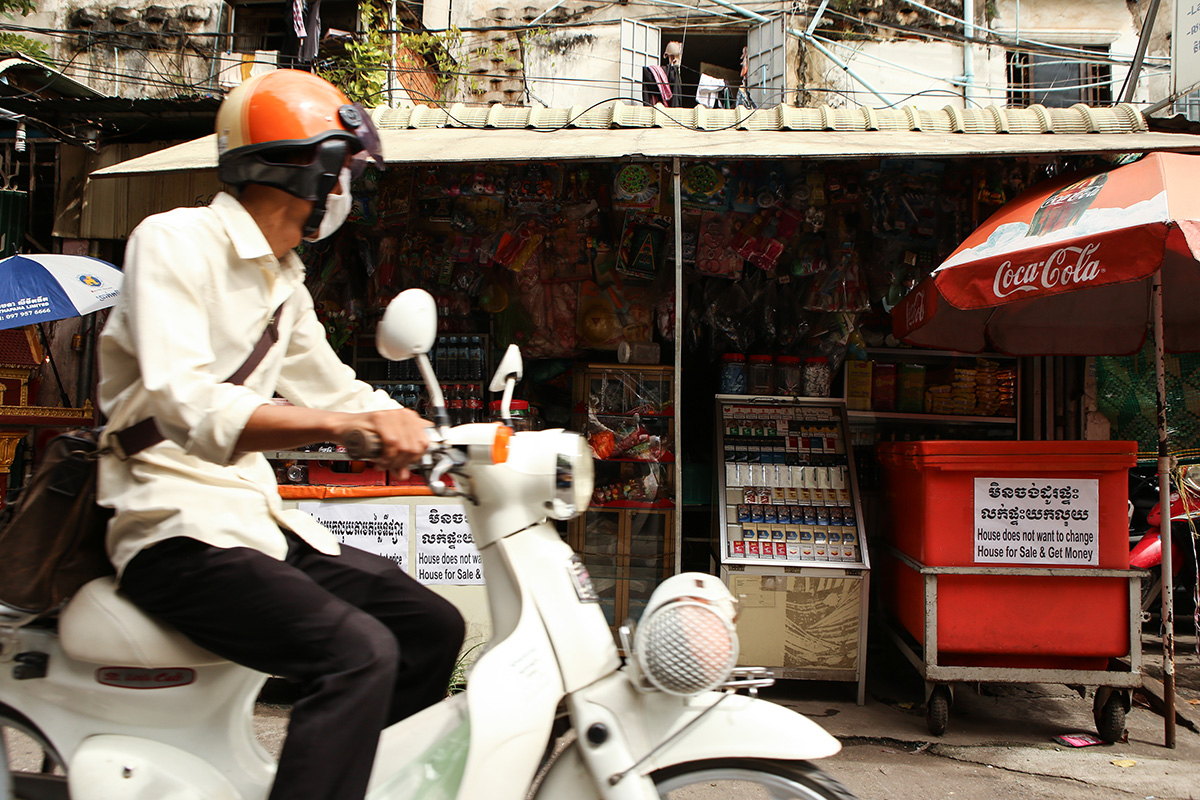
In the intervening years, however, Ms. Davy has traveled to Sweden, Taiwan and Indonesia to study dance and perform with other traditional Khmer dancers. As she visited communities in those countries and explored more of Phnom Penh, she began to realize the White Building’s unique character.
“I went to my friend’s house in Tuol Tompoung, but they have different lives,” she said. “They enter their apartment and close their door. They don’t sit outside. The neighbors don’t know each other. I love that I have the opportunity to do all those things.”
Now she wonders why she was ever embarrassed by her home. “I’m lucky to be here,” she said. “I feel like we are all siblings here.”
Even though Ms. Davy wants to stay, when Land Ministry officials asked her whether she would prefer to sell her house or move, she chose sell. It was the safer option.
“Normally in Cambodia when people leave their homes, the government is not stable,” she said, noting that Prime Minister Hun Sen being in power was the only thing that stayed the same. “Only the leader is stable—everything else changes.”
While compensation plans appear to be a better deal for residents than tear gas, fires and beatings, the all-too-typical currency of evictions, the current offer is still not enough to buy a new home in central Phnom Penh.
Housing prices in Phnom Penh rose more than 25 percent last year—the largest increase in the Asia-Pacific region. “With $70,000, they can’t buy a new place in the city,” Mr. Phanith said. “They will have to move far away from the city to start a new life.”
That means nearly all of the building’s residents, much like Mr. Phanith’s sister in 2009, will be forced to buy or rent a new home in the city’s far-flung outskirts.
At one point during the government’s visit, 14 people—nine government officials and five family members—squeezed into Ms. Davy’s small living room. They pushed lego blocks and coloring books against the walls in order to make space to sit as they pored for hours over identification and historical documents in an effort to verify that the home Ms. Davy has lived in her entire life is, in fact, hers.
In the end, Ms. Davy needed to produce two siblings’ fingerprints, a family book, an identification card and a request for official death certificates for her parents. And she’s not even sure that was enough.
Two hours later, as the last official left her living room without taking any measurements or providing any documents, Ms. Davy was exhausted and uneasy.
“I feel like, after that, what’s going on?” she said, speaking softly so the officials wouldn’t overhear. “We are still unclear about our house.”
She shook her head, fearing the documents might be changed or doctored at a later date. “They just said to believe them.”
Instead of putting residents at ease, the bombardment of bureaucratic forms seems to have left many residents even more confused and distrustful. After Land Management Ministry officials had left her apartment with copies of her ID, family book, marriage certificate and new measurements of her home on December 3, Ms. Savoeun, the snack vendor, was still suspicious of the process.
“I don’t trust them yet,” she said. “Even if I get the money, I will have to move far away. I worry that my children won’t have a school to study at. They study here for free, but when I move…I don’t know.”
Some residents, like Ms. Davy’s 82-year-old neighbor, were mystified by the process.
“I didn’t understand,” she told Ms. Davy in the hallway outside their apartments after the officials had left. “I didn’t understand what they said.”

Renters in the White Building are particularly vulnerable, as they won’t qualify for buyouts or relocation. Aziza, a nonprofit school run by the NGO Empowering Youth in Cambodia (EYC), which provides free English and computer classes to about 200 children and adults, including Ms. Savoeun’s three daughters, is among them.
Aziza’s manager, Chev Doeurn, a soft-spoken 28-year-old who manages the school’s day-to-day activities, also works as a part-time filmmaker at Bophana Audiovisual Resource Center, one of the city’s best-known filmmaking institutes. For a makeshift bed each night, he pushes together the desks in Aziza’s only classroom.
Mr. Doeurn moved to the White Building in 2012, first studying at Aziza before moving up to teacher and then manager last year. Over four years, he learned about his neighbors and the evictions they endured at Dey Krahorm and Boeng Kak Lake, two of the city’s most infamous eviction sites. “I feel sad that other people in Cambodia have so many problems,” he said.
Delphine Vann, the country manager for EYC who oversees the organization’s four schools in the capital, said that for now, Aziza’s status was up in the air.
“It’s a bit of a mess right now….The plans are not yet clear,” she said. “The students and the families are feeling very distressed….We are providing this education to all these children, and they are being uprooted.”
Mr. Doeurn said he’s considered ways to resist the eviction. He met with the White Building collective—an eight-member art group responsible for producing, among other works, the Humans of Phnom Penh Facebook page—but nothing concrete came from the meeting. The constant threat of eviction hanging over their heads has exhausted the group.
“We are a little bit tired….For now, we still have class, we still have a party at the end of the year,” he said. “We keep doing what we are doing.”
The same holds true for many of the White Building’s residents: Ms. Davy continues to go to dance recitals and performances in the theaters near her home; Ms. Savoeun sells snacks to the gangs of children who run freely around the hallways; Mr. Phanith mans his desk at the White Building archive, collecting stories and preserving the building’s expansive history.
With agreements between the government and Arakawa inked and officials mobilized, all signs point toward the inevitable demolition of a centerpiece of historical Phnom Penh and one of a dwindling number of central, affordable housing complexes in the capital—scattering its residents to the outer reaches of the city and contributing further to the city’s interminable exile of the urban poor.
“What can I do?” asked Mr. Doeurn, Aziza’s manager. “I try to teach here, clean some….I can’t do it all.”



